
|
|
|
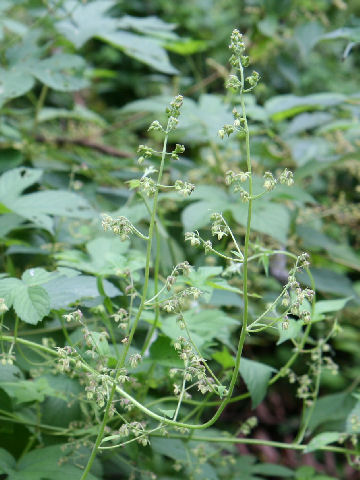 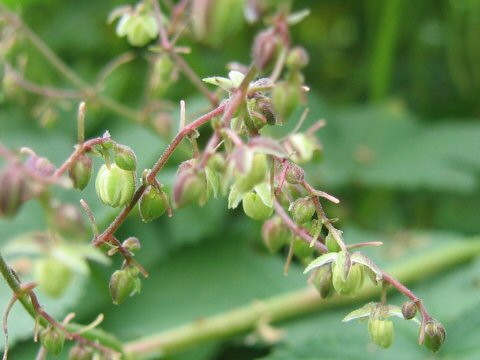 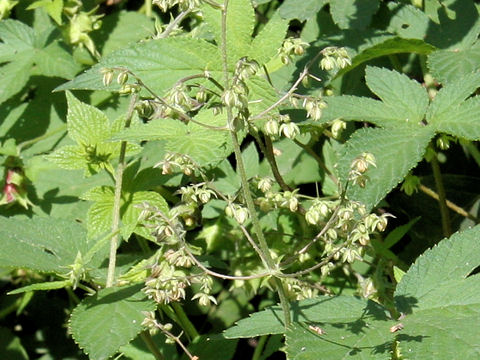 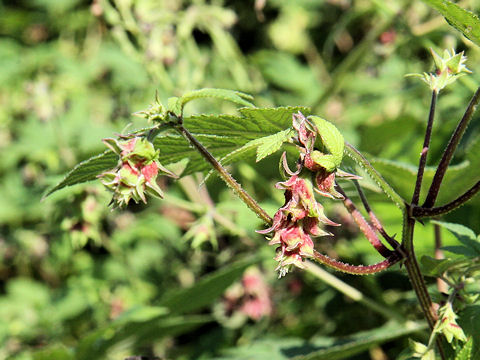 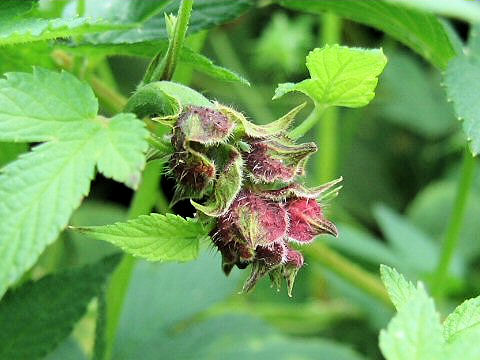 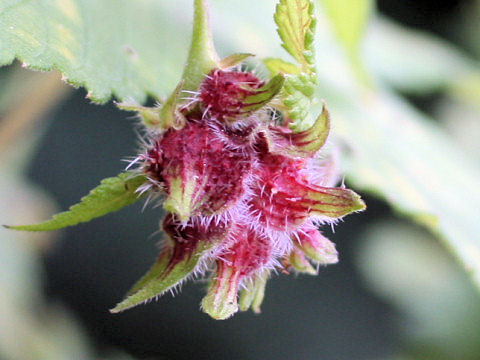 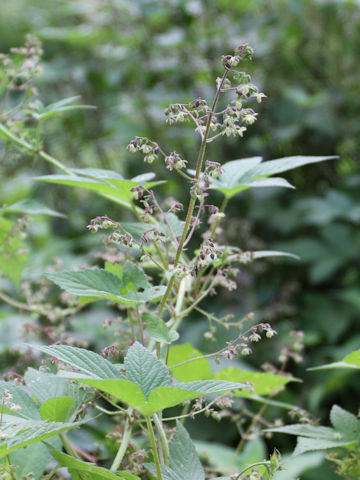 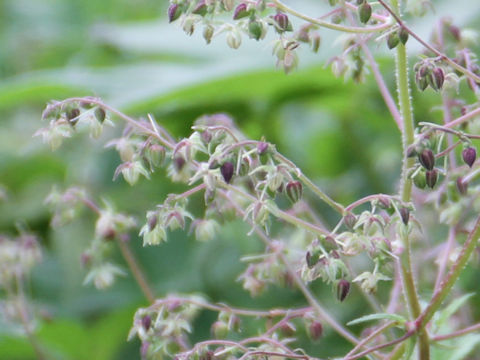 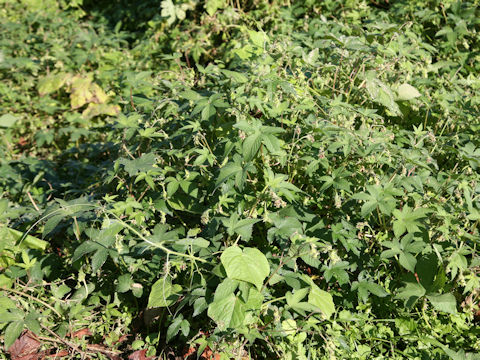 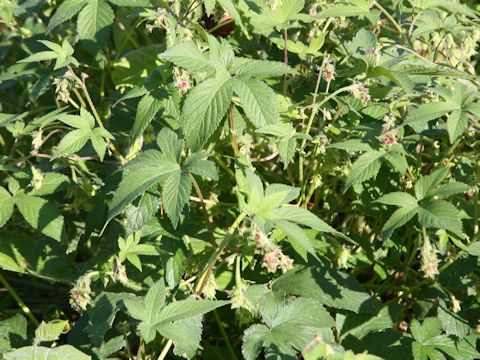 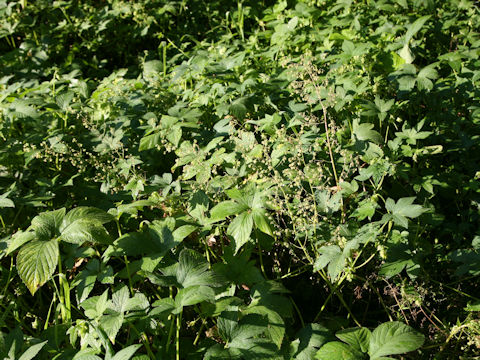 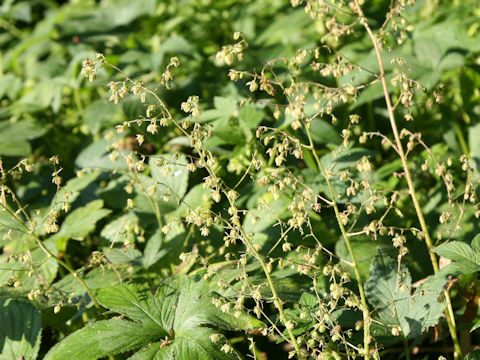 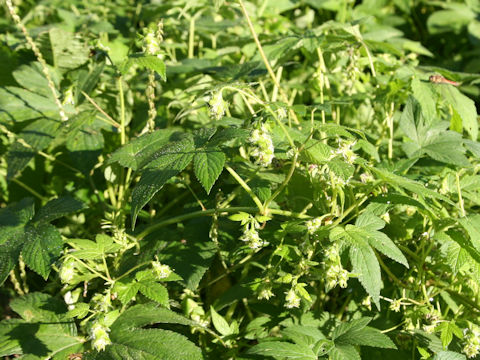 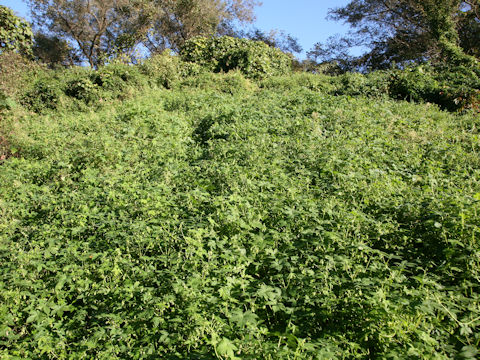 |
|
|
|
わが国の各地をはじめ、台湾や朝鮮半島、中国に分布しています。道端や荒れ地などに生え、蔓を伸ばしてほかの植物に絡まります。葉は5〜7裂する掌状複葉で対生しますが、表面に粗毛が生えています。雌雄異株で、8月から10月ごろに花を咲かせます。立ち上がるのは雄花です。茎や葉柄には下向きの棘があり、とても丈夫で鋭く、手足に傷をつけることがあります。ビールの苦味に使用される「ホップ」の仲間です。台湾華語では「葎草」、中国語では「葎草(lu cao)」と呼ばれます。 北アメリカでは、観賞用として18800年代半ばから後半にかけて導入されたものが逸出し、現在では北アメリカの東部から中部にかけて帰化しています。小さな樹木や低木、開けた地面などを覆い尽くすため、侵略的外来植物に指定されています。 |
|
|
アサ科カラハナソウ属の一年草で、学名は Humulus japonicus (syn. Humulus scandens)。英名は Japanese hop。 |
|
|
The Japanese hop (Humulus japonicus) belongs to Cannabaceae (the Hemp family). It is an annual herb that is native to Japan, as well as Taiwan, the Korean Peninsula and China. This herb is a trailing vine and grows on roadsides or barrens. It has acute downward spines on the stems and petioles. The leaves are opposite and digitate with 5-7 segments. They are covered with rough hairs. It is dioecious and flowers from August to October. It is the male flowers that stand up. The stems and petioles have downward-pointing spines that are very tough and sharp and can wound limbs. It is a member of the "hop" family used for bitterness in beer. In Taiwanese Chinese, it is called "葎草" and in Chinese "葎草" (lu cao). In North America, it escaped from cultivation as an ornamental plant in the mid to late 1880s, and has now naturalized from the eastern to central parts of North America. It has been designated as an invasive plant species because it covers small trees, shrubs, and open ground. |
|
|
[上] 奈良県御所市関屋「金剛山」にて、2006年09月05日撮影。 [中5] 同上にて、2005年10月13日撮影。 [中1・中4] 大阪府四條畷市逢阪「清滝峠」にて、2003年10月07日撮影。 [中2・中3] 岐阜県恵那市大井町にて、2007年10月04日撮影。 [中6・中7] 福島県須賀川市勢至堂にて、2016年09月11日撮影。 [中8・中9] 宮城県大河原町小島「荒川」にて、2023年10月31日撮影。 [中10〜12・下] 宮城県村田町足立にて、2024年10月12日撮影。 |

|
|
Shu Suehiro |